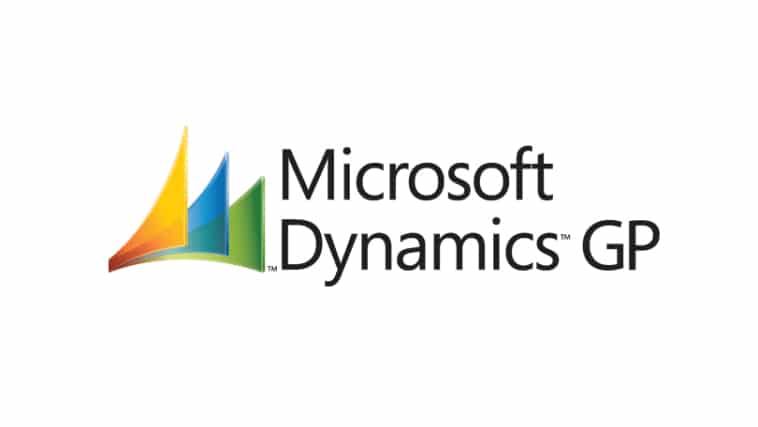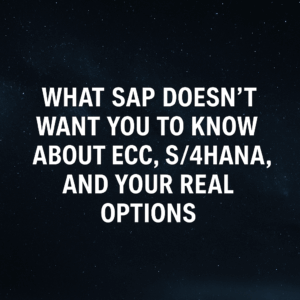In many ways, an
ERP system acts as a living, breathing entity within an organization. These systems require a certain level of attention to function successfully, even after implementation is complete. While many consider
ERP software to be a worthwhile investment, it is, by no means, an immortal solution. At some point, aging systems become a hassle to support and must be replaced, leaving ERP providers the choice to continue supporting legacy products or establish an “end-of-life” plan in hopes customers transition to the latest version.
When the time comes, many businesses are ready to move to the next chapter. For others, the transition can feel like a surprise eviction. Recently, Microsoft announced that they would be discontinuing support for
Dynamics Great Plains by 2025. The Great Plains system itself is considered a giant in the industry and has delivered a reliable ERP and accounting solution for decades. This news left many small and medium-sized businesses feeling uncertain. In an effort to help organizations unpack this latest announcement from Microsoft, let’s dive into the history of GP, what this end-of-life announcement means for Microsoft, and how current GP clients can navigate their future in ERP.
What is Dynamics GP?
Most people are familiar with Microsoft’s offerings — Windows, Office, Azure, to name a few. Microsoft Dynamics Great Plains, or
Microsoft Dynamics GP as it is often abbreviated, is one of Microsoft’s most established
ERP solutions. When Microsoft first got into the ERP space, they did so by acquiring smaller, well-established companies in the industry. One of those companies was Great Plains Software, an organization that built a respectable client base with its high-end accounting and financial software. Since its acquisition by Microsoft in 2000, Great Plains was merged into the Dynamics Business Solutions brand and widely adopted by small and medium-sized businesses across the world. It even serves as the accounting and finance center of other solutions, like Epicor’s Prophet 21.
As one of Microsoft’s first offerings for ERP, Dynamics GP quickly spread across organizations and industries, gaining traction with manufacturing and field-service organizations thanks to Microsoft’s good reputation and easy integration with the rest of their stack. Now, as the Microsoft Dynamics GP journey comes to a close, existing customers are facing hard decisions and a deadline of 2025 as they start planning for the future.
So… you’re a Microsoft Dynamics GP user. Now what?
If you’re a current Dynamics GP user, there’s no need to panic. My fellow
independent ERP experts and I at Third Stage are here to help you navigate this latest industry news. As you start to think about the future, here are two options for you to consider as you look ahead.
Option 1: Transition to Microsoft Dynamics 365
Microsoft is a leader in the software space for a reason, and they’re not going to leave their clients high and dry. Microsoft will work with existing clients to transition to their cloud-based platform:
Microsoft Dynamics 365. And there are a few good reasons why you should hear them out. First, because you are a current Dynamics GP user, the transition to Dynamics 365 will be familiar. Much like switching to the latest iPhone from an older model, there will be some new features you will have to learn, but you’ll still have that Microsoft look and feel. You won’t have as much of an uphill
organizational change management battle having to onboard employees or figure out how your hardware will adjust to something new. Both Microsoft Dynamics 365 Finance and Operations and Microsoft Business Central are significant upgrades.
Option 2: Work with an after-market support team
Obsolescence is an inevitability in ERP, especially as it comes to software packages that either cannot be supported on the cloud or were acquired as a larger company. Oracle has been trying to end of life
JD Edwards for 20 years since it acquired Peoplesoft. Infor has a wide variety of greenscreen systems that have been out of support for just as long. When one door closes, the market opens a window and smaller tech companies pop up to offer support services. While these companies are not likely to expand the functionality available in Microsoft GP, they will allow you to stay on the system for quite a lot longer than 2025. You would get to keep your ERP, but it will continue to get older and more out of date as time goes on. There is a better way.
Option 3: Find an ERP system that’s a better fit
There’s a good chance that your business has changed, even significantly, since you first implemented Microsoft GP. You should know what your options are, even if you end up deciding Microsoft still fits best. In this light, the loss of GP may actually turn into a great opportunity for your business. Microsoft is essentially forcing your hand, making you choose between upgrading to Dynamics 365, paying for an out-of-date model, or jumping ship to something new. Because of this, there’s never been a better time to shop around for an ERP system that truly fits your needs. There are a number of excellent offerings on the market, from well-known software solutions to smaller ERP companies you may have never heard of.
The first step is to do your research and really understand the current and future needs of your organization. Next, consider reading a few
independent reviews of offerings out there. We also have a
helpful comparison guide that details the pros and cons of a few of the most popular ERP systems side by side. This is Third Stage Consulting’s expertise, and we are happy to be an informal sounding board for you as you begin exploring which software solutions are the right fit for your company’s specific needs.
In Conclusion
Change is never easy, but in businesses, it’s important to keep moving forward. I hope this article can help you find the right path to take, now that Dynamics GP is coming to a close. As an independent consultancy, Third Stage has so many resources available to you for free, that you can dial into today. You can always find helpful industry information like product comparisons and news on our blog, and you can stay up to date with our video offerings on our
YouTube channel. Don’t miss our latest outlet, the
podcast, which takes a deeper dive into the most relevant corners of the ERP and digital transformation space.
As always, if you need any help, my digital door is always open.
Reach out with any questions you may have, I’m always happy to give advice, chat about
software selection, and guide you through the next step in your
digital transformation.
Update:
Over the last few months, I have had numerous conversations on this topic, some of them with readers who responded to the news of Microsoft seeking to end date support on the strategy roadmap for Great Plains. Many of these conversations were with GP users whose system integrators and support teams had shared this news with them, leading them to find Third Stage. Other conversations were with vendors and integrators seeking to either confirm or disprove this message. Thank you all for your feedback.
Since the posting of this blog, Microsoft has since walked back the message on discontinuation of support for Great Plains. The roadmap has been updated to reflect longer continued support. What does this mean? Most directly it means that Microsoft will continue to seek to discontinue support for Great Plains as they move more towards the cloud and the Dynamics 365 platform. Less and less attention will be paid to supporting GP.
Why would Microsoft discontinue such a popular product? The answer lies within the motivations that current GP users have relayed from their conversations with their current system integrators – to migrate customers on perpetual licenses that yield a low revenue for maintenance to subscription-based models. Some SIs are offering an upgrade path to Microsoft Dynamics 365. Some SIs are offering one of their other products from other ERP providers more suited to smaller clients. Their message in each conversation has been clear – Microsoft is discontinuing Great Plains, it’s time to get on to a new ERP.
This is not uncommon. Oracle has had plans to sunset JD Edwards since it was included in their acquisition of Peoplesoft, decades ago. Peoplesoft was even rumored to have plans for discontinuing JDE before being acquired by Oracle. JDE, for those who do not use it, has a cult-like following in the manufacturing space. We’ve done countless evaluations of JDE, assessing it’s fit for purpose for organizations still using it. A familiar story comes to the surface fairly frequently – Oracle is saying it’s time to upgrade Oracle ERP Cloud, should we do it? Oracle ERP Cloud is, of course, a subscription-based platform. Even adding functionality at a negotiated rate from the original JDE contract stoked resistance from Oracle, preferring to actively avoid providing the requested scope and quote for JDE work and instead of providing demonstrations, quotes, and all kinds of information on Oracle ERP Cloud.
One of the most common falsehoods I hear in speaking with these concerned users is that upgrading from one Microsoft or Oracle product to another is seamless, it’ll be easy. The truth is that it is not. It is an entirely new, different implementation. You might as well be buying any other software, especially when upgrading from an on-premise software to a cloud software. If you decide that you want new ERP, don’t fall into this trap.
Start with all available options, including your current system and other products owned by the vendor that provides it. Consider internal process improvements, change management tactics, and more niche solutions that target specific pain points and needs. Create a strategy for determining if you need a new ERP at all. If you find that you do, the due diligence will serve a powerful purpose in readiness and awareness that will help you implement successfully. ERP implementations are hard, expensive, and disruptive. These aren’t things you want to undertake just because Microsoft or Oracle wants you to, they are things that should be undertaken with great care.
Be sure to download the newly released 2023 Digital Transformation Report to garner additional industry insight and project best practices.
Also download our Supply Chain Management Playbook here.







